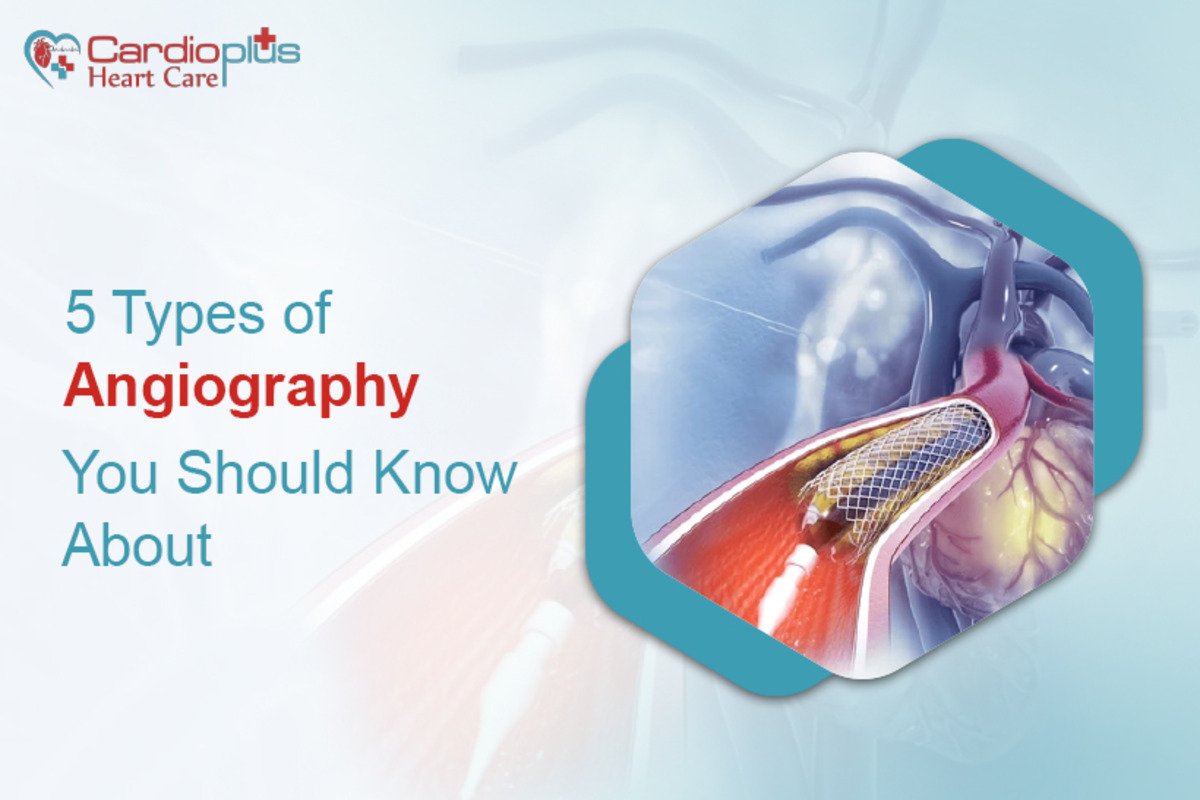When it comes to heart health, understanding your options for diagnostic procedures is essential. There are several diagnostic methods that are essential to cardiologists, such as angiography, which can also be used to visualise blood vessels and, for example, study them with Dr. Jignesh Patel Best Cardiologist in Ahmedabad from CardioPlus Heart Care. Here, we will be looking at what you should know about the five types of angiography that are administered.
Introduction to Angiography
Angiography can be defined as medical imaging or a procedure that allows visualisation of the inside of blood vessels and organs of the body with special reference to the arteries, veins and organs such as the heart. It is especially valuable in the detection of several cardiovascular issues. For the best cardiologist in Ahmedabad or heart specialist in Ahmedabad, you can consult Dr Patel at CardioPlus Heart Care that offers new and improved angiography services.
1. Conventional Angiography
Angiography basic procedure is often called Conventional Angiography.in this technique, first a catheter is placed in the blood vessels and then a contrast fluid is injected. Conventional Angiography fluoroscopic imaging is then used in order to visualise the arterial blood supply and to assess hypoperfusion or any other pathologic condition that is present. This gives high results, but it is less invasive than other angiographies oftentimes used to diagnose various heart conditions.
2. CT Angiography (CTA)
CT Angiography is an X-ray imaging that enables the clinician to gain full-section pictures of the blood vessels and tissues. It entails the use of a contrast solution that is injected into the cardiovascular system to enhance depiction of the arteries. Relative to the traditional angio-grams, CTA is more noninvasive and yields results rapidly. It is most effective in diagnosing aneurysm, occlusion disorders and other vascular diseases.
3. MRI Angiography (MRA)
MRIA is composed of Magnetic Resonance Imaging used to obtain vascular images of blood vessels. It has the advantage of not emitting radiation like some techniques used in CT angiography, thus making it safer for some patients. MRA is outstanding for viewing the soft tissues and blood vessels, thus being useful in the diagnosis of disorders of the heart and vessels.
4. Digital Subtraction Angiography (DSA)
Digital subtraction angiography is a refined type of angiography which can make the blood vessels more easily observed by subtracting the early phase images from the later phase ones. This method offers considerable distinct and explicit images of the blood vasculature, which is crucial for the proper identification of vascular diseases. DSA is typically applied in interventional radiology applications.
5. Intraoperative Angiography
Intraoperative Angiography is an intervention that gives immediate images and blood vessels during surgery. This type is especially useful when the surgery and especially helpful when blood vessels are being severed and must be assured of their integrity in order to reconnect them to the appropriate vessels. The system supports a surgeon’s function of making quick decisions, or the occasional changes when required.
Conclusion
This article discusses the various kinds of angiography to aid you in managing your cardiac health. Whether you are planning to do angiography or require any consultation on the heart related problems, you should consult Dr. Jignesh Patel, the Best Cardiologist in Ahmedabad .
While in CardioPlus Heart Care you are also welcome to know more about endovascular procedures or percutaneous balloon mitral valvuloplasty in Ahmedabad
Ensuring your heart health is paramount, and with the right heart specialist in Ahmedabad and diagnostic tools, you can achieve optimal outcomes. Schedule your consultation today at CardioPlus Heart Care and take the first step towards a healthier heart.






